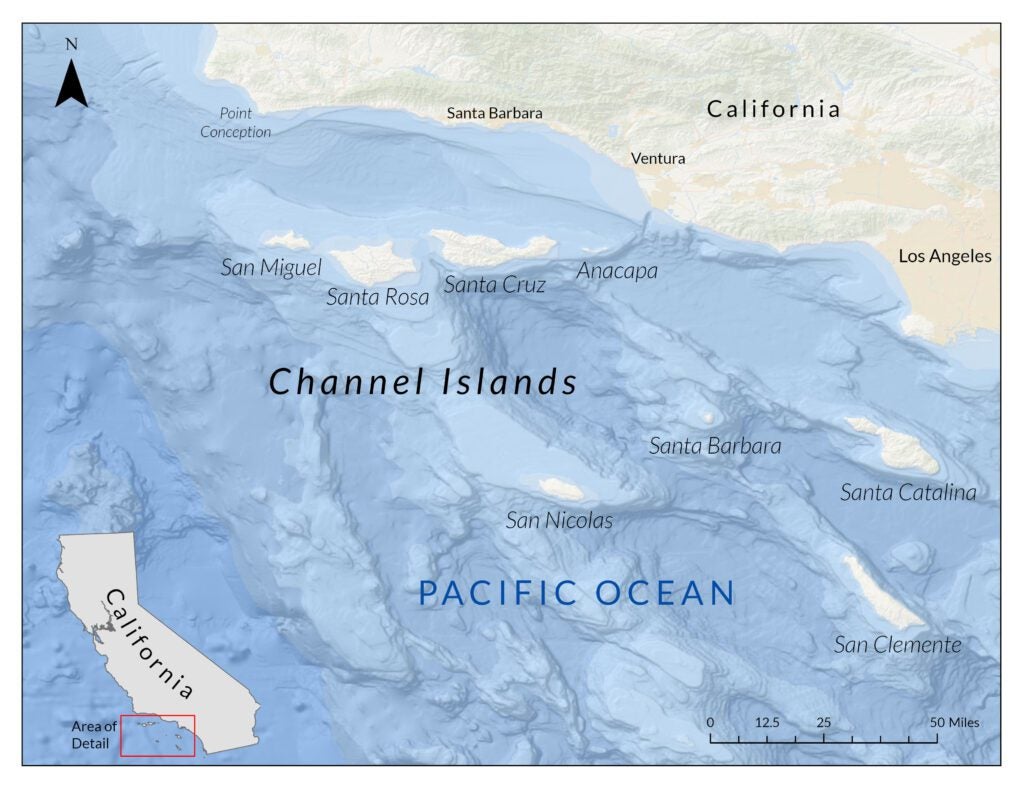Explore the Channel Islands
Offshore of Southern California lies a chain of eight islands (San Miguel, Santa Rosa, Santa Cruz, Anacapa, San Nicolas, Santa Barbara, Santa Catalina, and San Clemente) touted as the “Galapagos of North America” due to their rich biodiversity. Collectively known as the Channel Islands, the northernmost five islands and surrounding ocean waters make up the Channel Island National Park and the encompassing Channel Islands National Marine Sanctuary. The islands, their submerged lands, and the waters within one nautical mile of each island are a UNESCO biosphere reserve.

The offshore islands sit amid a confluence of temperate and sub-tropical ocean currents that create dynamic conditions supporting the ocean’s tiniest species—like plankton—to the largest animal on the globe—the blue whale. The California Current brings cold water in from the north, and the Southern California Counter-current brings warm water up from the south. The presence and merging of these vastly different waters creates conditions for northern and southern species to thrive in the same region. Additionally, the islands are famous for the hundreds of sea caves formed by erosion of the volcanic island rock which provide habitat for ocean animals and plants. Santa Cruz Island boasts one of the largest sea caves in the world called Painted Cave.

The islands support an important ecotourism economy with world-class scuba diving, snorkeling, kayaking, camping, recreational fishing, and boat tours. While there are many low-impact commercial fisheries in this region including trolled hook and line, deep-set buoy gear, and trap fisheries, some harmful gears such as set and drift gillnets are still allowed in state waters off the islands.
The northern Channel Islands have significant cultural importance as they were home to many native Chumash communities who are believed to have inhabited the islands for thousands of years and relied heavily on the surrounding marine environment.



